





In the 1960s landscape architect Lawrence Halprin wrote an ode to the northern California coastline with his master plan for a new community called Sea Ranch.
Halprin dreamed of low-slung houses that would blend into the landscape rather than dominate it. He imagined Sea Ranch as a utopia: with hedges instead of fences, shared meadows instead of lawns, and gardens of no-mow grasses and native plants. Fifty years later, the result is a place where you can breathe—and so can the land. Here are 10 ideas to steal from Sea Ranch:
Photography by Meredith Swinehart except where noted.
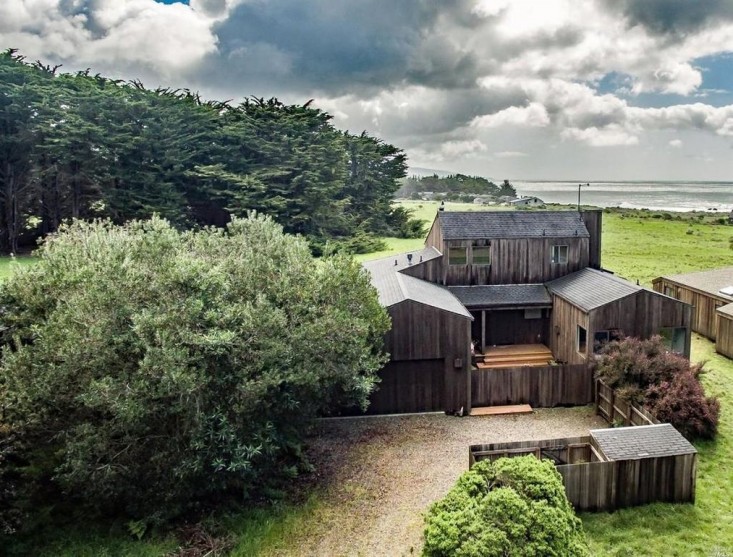
Above: Photograph courtesy of Realtor. Allowed to weather naturally, a wood-sided facade at Sea Ranch blends into the landscape instead of fighting it. The house is for sale for $815,000. For more of this house, see Realtor.
Houses are clad in redwood or cedar siding or shingles, encouraged to weather to a soft silver-gray that cedes center stage to greenery and scenery.
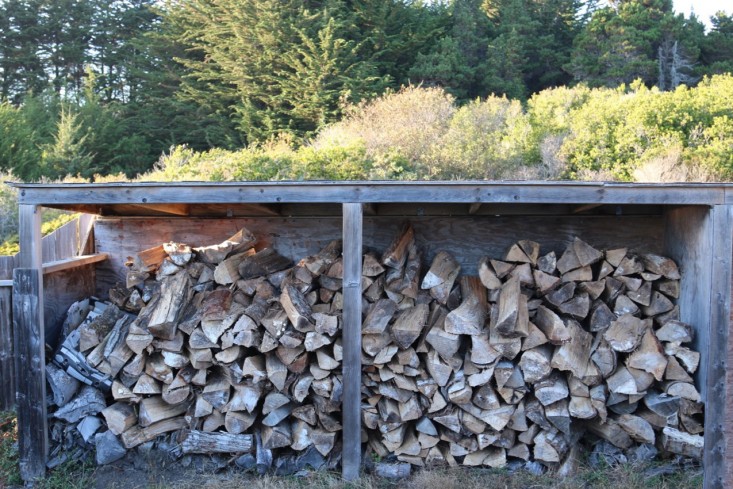
Above: Simple lean-to shelters and open-air sheds conceal trash bins, woodpiles, and garden tools. Built of redwood or cedar to match facades, they blend into the landscape instead of calling attention to themselves.
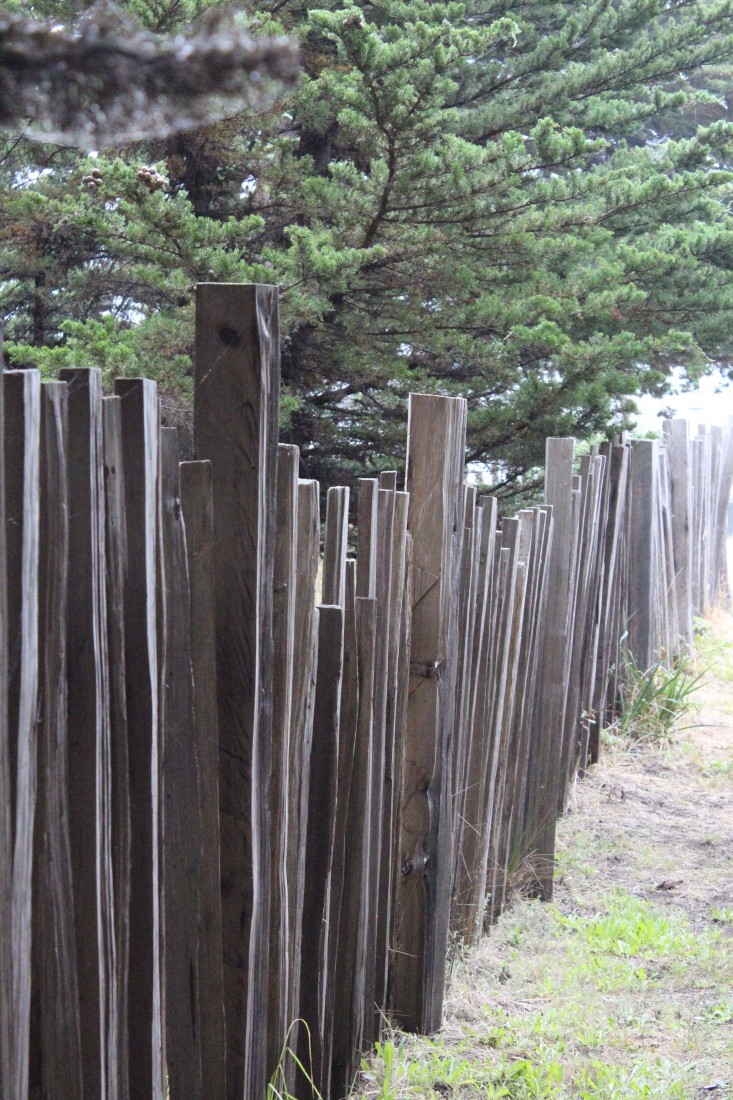
Above: Photograph by Michelle Slatalla. Fences to define property lines are strongly discouraged at Sea Ranch (hedgerows are preferred). Fences built alongside public walking trails and paths have pickets spaced a few inches apart to allow light and air to circulate.
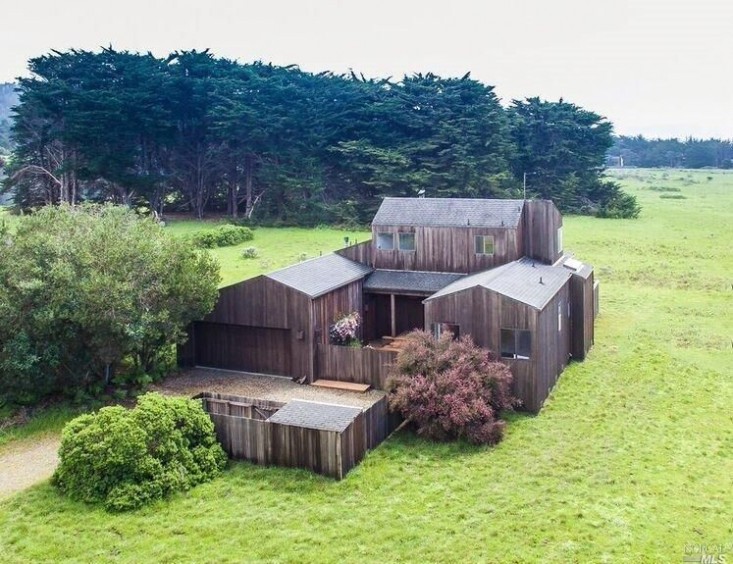
Above: Photograph courtesy of Realtor. Driveways paid with gravel or decomposed granite provide good drainage, have a soft appearance, and ease the transition between garden and wilderness. For more, see Hardscaping 101: Decomposed Granite.
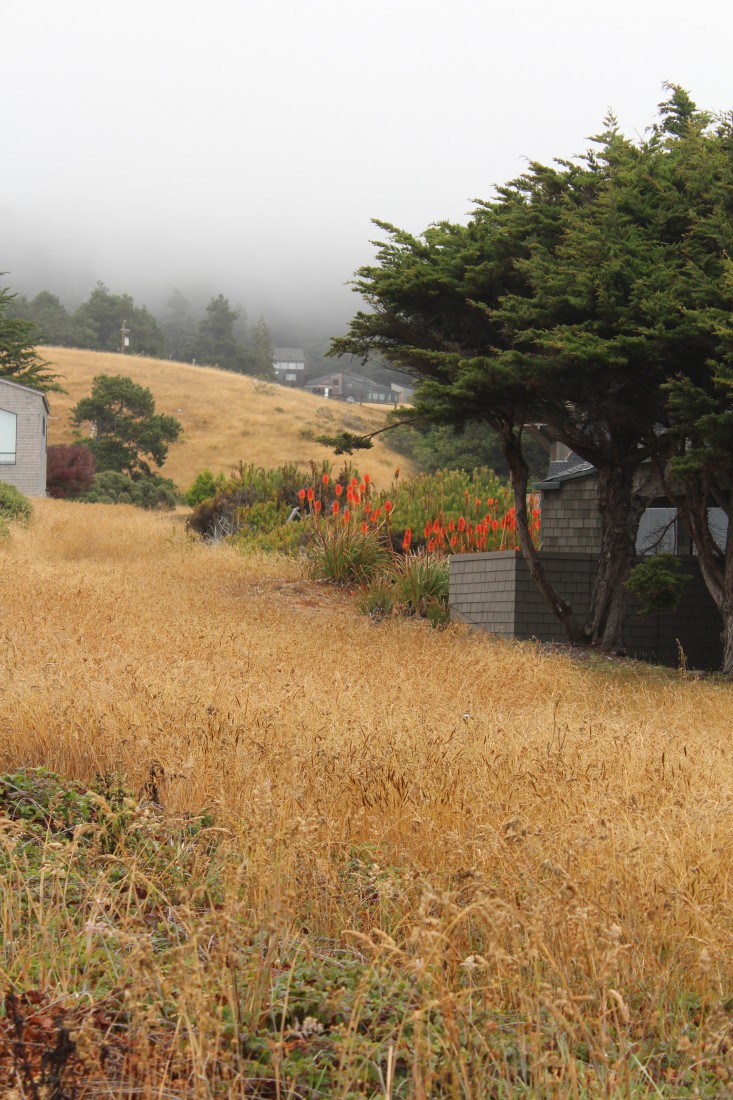
Above: Photograph by Michelle Slatalla.
Rather than dividing lots visually with mown lawns or perimeter plantings, Sea Ranch properties blend into each other to create unobstructed views and a sense of spaciousness.
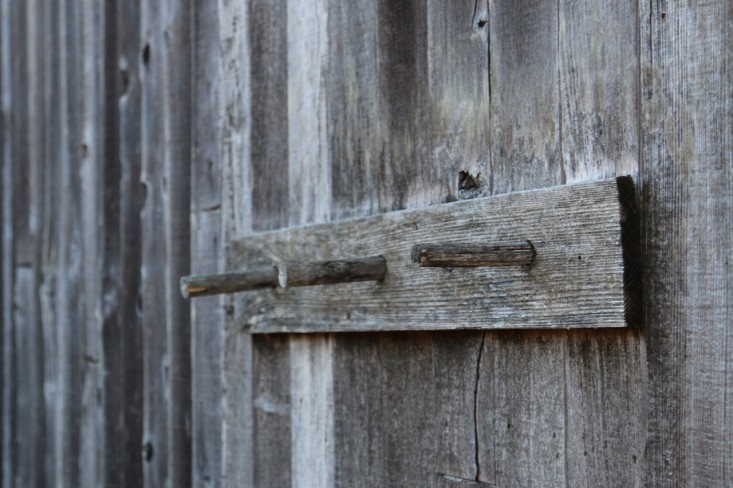
Above: Simple but brilliant; an unobtrusive cedar or redwood peg rail for beach towels, dog leashes, and sun hats will disappear visually when not in use.
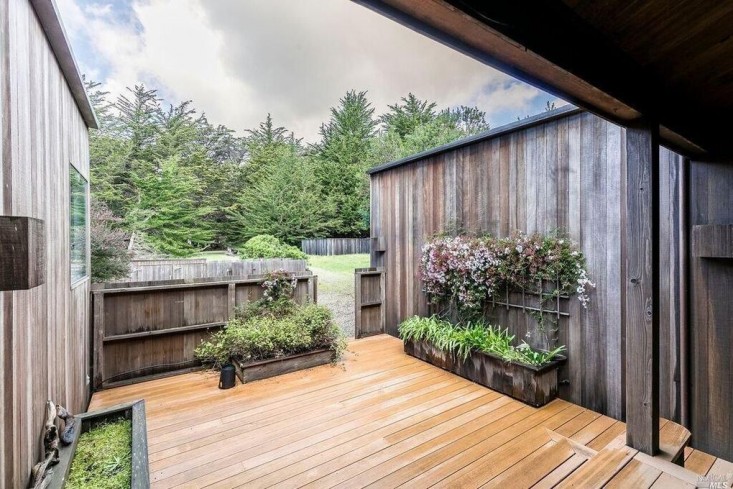
Above: Photograph courtesy of Realtor. Interior courtyards block wind from harming plantings and create serene, sheltered outdoor rooms for dining or lounging.
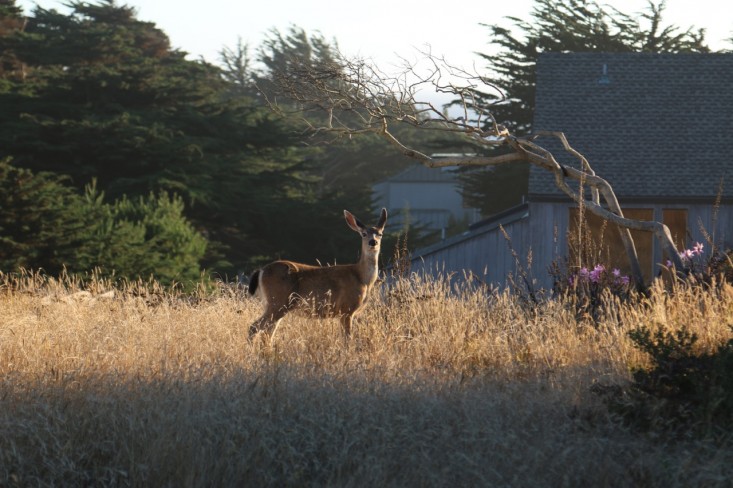
Above: Native plantings are naturally deer-resistant; no need to dread the impact of local wildlife.
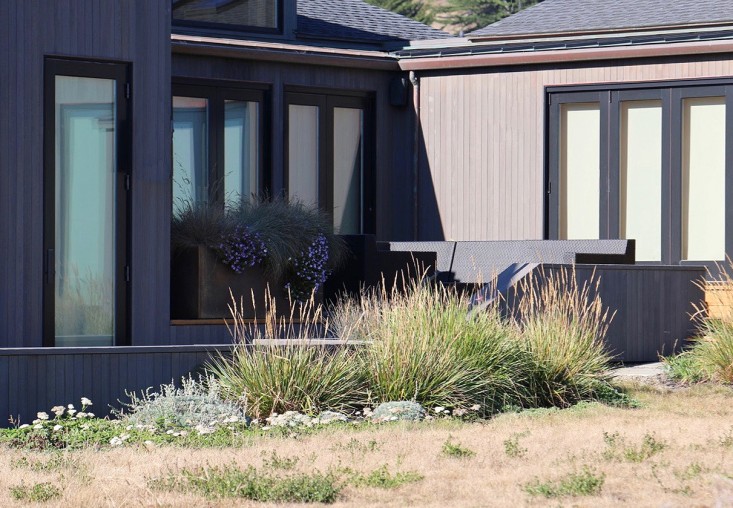
Above: Perennials grasses are drought resistant and look just as good in planters as in the ground.
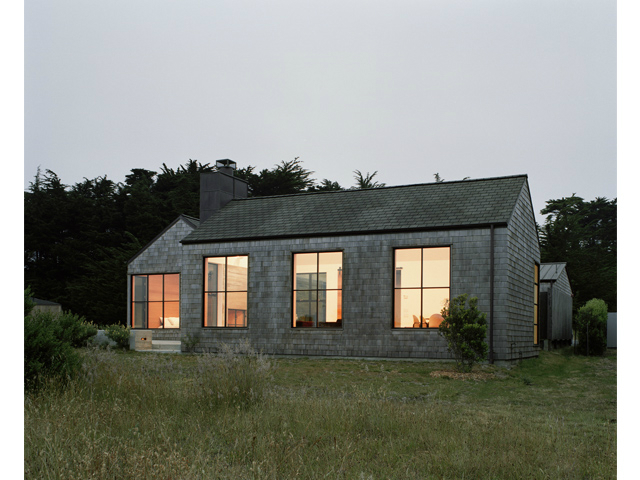
Above: Photograph courtesy of Remodelista Architect/Designer Directory member Nick Noyes Architecture. Architectural elements such as window sashes are dark (instead of a contrasting color such as white) to create a backdrop for the landscape.
Minimal roof overhangs simplify the facade and connect a roof to the rest of the structure to help it recede into the background.
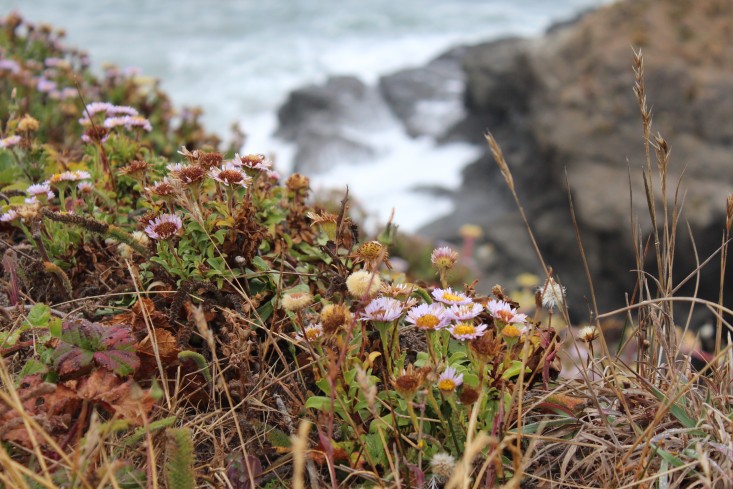
Above: Photograph by Michelle Slatalla. Looking for a house in Sea Ranch? See what’s on the market at Realtor.
N.B.: For more sustainable design, see 10 Easy Pieces: Rain Barrels and 11 Ideas to Steal from Drought-Resistant Gardens.
Copyright © www.100flowers.win Botanic Garden All Rights Reserved